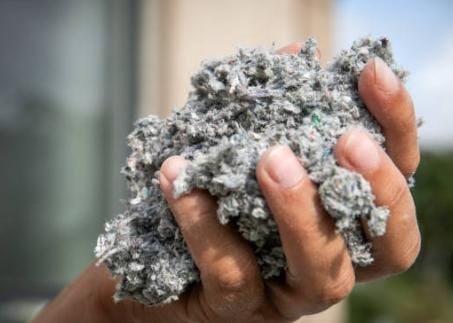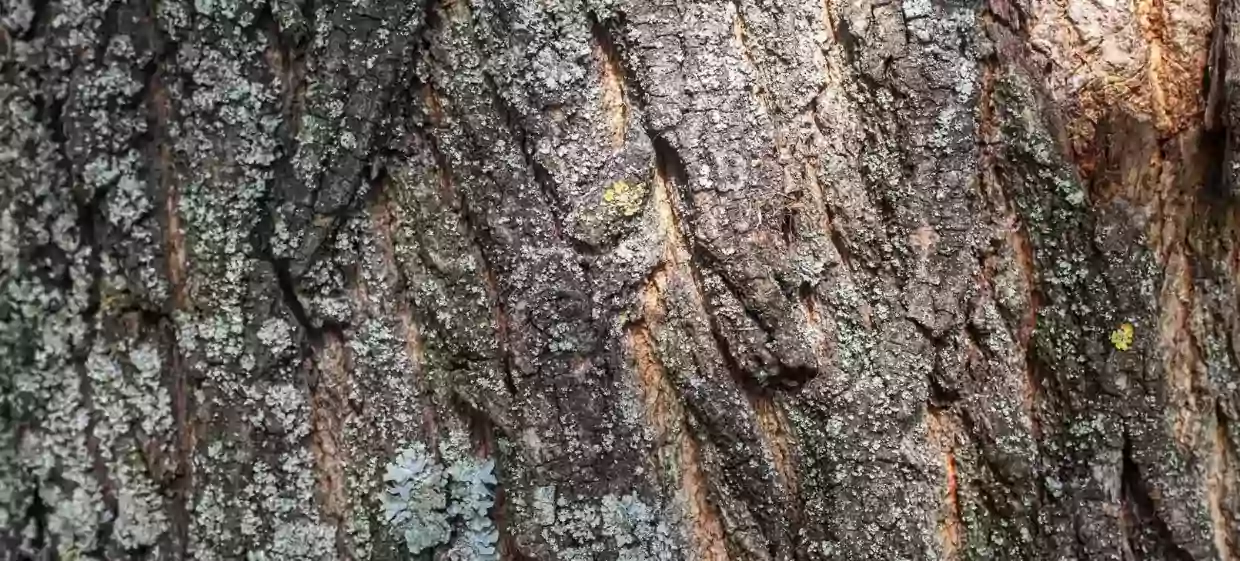Homemade Insulation Ideas – 7 Amazing Handmade Insulation Ideas for Your Home: DIY Insulation
First of all, we say about homemade insulation ideas, A home’s insulation plays a vital role in controlling temperature, saving energy, and fostering a comfortable living space. Even though there are lots of options for business insulation, they are frequently costly and could include hazardous materials. Luckily, there are several inexpensive, environmentally friendly, and surprisingly efficient DIY insulating options available, this insulation is known as Sustainable Insulation, we may read the post, Sustainable Wall Insulation. We’ll look at seven unique do-it-yourself insulation solutions in this blog post that you can quickly put into practice in your own house.
Homemade Insulation Ideas

Here we are sharing the 7 best homemade insulation ideas. In the previous post, Warehouse Insulation Ideas, we read all the information about warehouse insulation, Now in this post let’s read about homemade insulation ideas-
Recycled Denim Insulation:- homemade insulation ideas
Recycled denim insulation is one of the most often used DIY insulation materials. Used denim jeans that would have otherwise ended up in landfills are used in this environmentally friendly substitute. Just gather old jeans, cut them into little pieces, and combine them with a binding agent like natural latex or boric acid to make recycled denim insulation. The mixture that is left over can subsequently be used to insulate crawl spaces and attics, or it can be packed into wall cavities. Recycled denim insulation is chemical-free and provides exceptional thermal performance.
Newspaper Insulation:

Repurposing used newspapers, and newspaper insulation is an additional green alternative. Shred newspapers into small bits and combine them with a water-based glue to create newspaper insulation. Using a putty knife or trowel, the mixture can be applied to walls, ceilings, or floors once it has attained a paste-like consistency. Newspaper insulation has strong thermal insulation qualities, is lightweight, and is simple to install. It may also aid in lessening noise transmission inside the house.
Wool Insulation:- Homemade Insulation Ideas
A sustainable and all-natural substitute for conventional insulation materials is wool. Sheep’s wool has great insulating qualities, offering protection against heat and sound. You can either buy raw wool or recycle old wool blankets and clothes to make wool insulation. Just give the wool a quick cleaning to get rid of any dirt or debris before using it to make insulating panels or packing it into wall cavities.
Straw Bale Insulation:
Utilized for ages, straw bale insulation is an ancient building method. Walls are constructed by stacking straw bales, which are then covered with plaster to produce a smooth surface. Because of the inherent air gaps in straw, this technique has exceptional insulating qualities. Furthermore, straw bale insulation is easily accessible in many rural regions, renewable, and biodegradable. Although building with straw bales may need for specific expertise and abilities, it can be a fulfilling do-it-yourself endeavor for daring homeowners.
Cork Insulation:

With its superior thermal and acoustic insulation qualities, cork insulation is a sustainable and natural choice. The bark of cork oak trees yields cork, which can be removed from the tree without causing damage to it. Cork panels or grains are attached and put to walls or ceilings to produce cork insulation. Cork insulation is fireproof, lightweight, and mold and mildew-resistant. Furthermore, we can say that this material, cork is a renewable resource, which can help to make it a sustainable option for insulation.
Rice Husk Insulation:
Making use of the outer husks of rice grains, rice husk insulation is a novel and inventive DIY insulating solution. A plentiful agricultural byproduct that would otherwise be thrown away is rice husks. The husks are ground into a fine powder and combined with a binding agent, such as clay or lime, to form rice husk insulation. After that, the slurry can be put into wall cavities or molded into insulation panels. Lightweight and fireproof, rice husk insulation has good thermal insulation qualities. It also contributes to less waste in the agriculture sector and is biodegradable.
Bubble Wrap Insulation:
Using bubble wrap sheets, bubble wrap insulation is an easy and affordable do-it-yourself insulating solution. Just cut bubble wrap sheets to the exact size of your windows or walls, and then use double-sided tape or spray adhesive to join them to make insulation. An air barrier produced by bubble wrap insulation aids in lowering heat transmission and increasing energy efficiency. A quick and temporary fix for draughty windows or walls with inadequate insulation is bubble wrap insulation, even if it might not offer as much insulation as other materials.
In summary, we can say that homemade insulation means DIY insulation presents a financially viable as well as environmentally sustainable, and adaptable substitute for commercial insulation materials so that you can go with these materials. There are lots of DIY means homemade insulation alternatives available, depending on your goals—reducing energy expenditures, increasing comfort, or minimizing your environmental impact. You may improve your home’s insulation as well as help to lessen your environmental effects by looking into these seven inventive homemade insulation options. So why not gather your supplies and begin working on your upcoming do-it-yourself project? The environment and your house will both appreciate it.
What Household Items Can Be Used As Insulation
Innovative Home Insulation Solutions: Getting the Most Out of Common Items
First of all, Insulation is essential for reducing energy expenses and keeping your home at a suitable temperature. Conventional insulating materials, such as cellulose, foam boards, and fiberglass, can be useful, but they might not always be easily accessible or reasonably priced. Still, there are a lot of everyday objects that make great substitutes for insulation. We’ll look at some inventive uses for common home objects as insulation in this blog post.
Quilts and blankets:
These multipurpose, easily accessible household objects can act as efficient insulation. To stop heat loss, they can be used to cover doors, windows, and draughty spaces. To prevent chilly drafts, just drape them across doorways or hang them over windows. Spreading blankets across floors can also aid in providing insulation from chilly surfaces.
Curtains:

Heavy curtains can act as an extra layer of protection against heat loss from windows. For further insulation, think about layering many curtains or using thicker materials like velvet or wool. When it’s chilly outside, keep your curtains closed to trap heat inside, and when it’s sunny outside, open them to let in natural light to warm your house.
Carpets & rugs:
Especially in colder climates, bare flooring can lead to heat loss. In addition to providing coziness and warmth to your house, rugs, and carpets insulate cold flooring. If you want higher insulation, go for thicker carpets with dense fibers. To reduce heat loss, strategically place rugs in high-traffic areas and rooms with uninsulated flooring.
Bubble Wrap:
An incredibly affordable and effective insulating material is bubble wrap. It helps as contribute to the formation of a layer of trapped air that serves as insulation as well as works as a thermal barrier. Just cut the bubble wrap to the appropriate size for your windows and use double-sided tape to secure it. This do-it-yourself fix can lessen heat transfer via windows without obstructing the flow of natural light into your house.
Newspaper:- what household items can be used as insulation
Although it might not seem like a good option for insulation, the newspaper can be very successful when utilized properly. To stop cold drafts, crumple up newspaper pages and tuck them into cracks and crevices around doors, windows, and other openings. Use plastic wrap or tape to secure the crumpled newspaper in place for increased sturdiness and efficacy.
Foam pool noodles:
These pool noodles are useful for more than simply summertime amusement; they may also be used as window and door insulation. To prevent drafts, cut the pool noodles to the appropriate length, slice them lengthwise, and place them over the edges of windows or door frames. This easy material is known as easy to use and low-cost, so fixing this material can help save energy expenses and stop heat loss.
In conclusion, expert installation or pricey materials are unnecessary for insulating your home. You may easily increase your home’s insulation and reduce your energy costs by being resourceful and recycling common household objects. Numerous do-it-yourself insulating options, such as pool noodles, bubble wrap, and blankets, are just waiting to be found in your own house. Lastly, we like to suggest you just try out these suggestions and see which ones best suit your needs and financial constraints.
How To Make Homemade Insulation
Whether preventing heat in the summer or trapping warmth in the winter, for both insulation is essential to maintaining comfortable temperatures in our homes. Conventional insulation materials, such as fiberglass and foam boards, are widely accessible but can be expensive and cause environmental problems. But there are less expensive and more environmentally friendly options that you can prepare at home. This tutorial will look at several inexpensive, sustainable, and do-it-yourself insulation methods.
Newspapers recycled insulation:- how to make homemade insulation
Material needed
Newspaper, water, borax, boric acid, and a sizable container are required materials.
Steps to making:
- Shred or tear the newspaper into tiny fragments and leave it in water for a few hours or perhaps overnight.
- After removing extra water, combine newspaper pulp with a borax and boric acid solution.
- The mixture blocks insects and retards fire.
Create thick bricks or panels out of the wet newspaper pulp. - Before putting the bricks in walls or attics, let them dry.
Insulation made of denim:

Supplies needed:
a blender or shredder, borax, boric acid, and old denim pants.
Directions:
- Gather used denim jackets or other articles of apparel.
- Use a blender or shredder to finely chop the denim.
- Combine the shredded denim with a borax and boric acid solution.
- Forming insulating batts requires pressing the denim mixture into panels or molds.
- Before placing the insulation, give it a few days to cure.
Wool Insulation:
The following supplies are required:
wool fibers, borax, boric acid, laundry detergent, and a big container.
Guidelines:- how to make homemade insulation
- To get rid of oil and grime, clean and wash the wool fibers using a mild detergent.
- To make clean wool fibers pest- and fire-resistant, soak them in a borax and boric acid solution.
- After draining the extra solution, let the wool fibers partially dry.
- To make insulating batts or rolls, stuff the wet wool fibers into fabric sacks or netting.
- Put the wool insulation in the attics, walls, or flooring.
Insulation made of cardboard:
Supplies required:- how to make homemade insulation
stapler, utility knife, and cardboard boxes.
Directions:
- Smooth and break cardboard boxes. With a utility knife, cut the cardboard into panels or strips.
- Overlap the edges of the cardboard panels by a small amount as you layer them to the required thickness.
- Use glue or staples to keep the layers together.
- Make sure the cardboard insulation fits snugly when installing it in walls or ceilings.
Advantages of DIY Insulation Eco-friendly:
Environmentally friendly:
Recycled materials are frequently used to make homemade insulation, which lessens waste and its negative effects on the environment.
Cost-effective:
DIY insulation can save you a lot of money on materials and installation compared to commercially available choices.
Customizable:
You can adjust the thickness and materials of homemade insulation to meet your unique requirements.
Improved indoor air quality:
Homemade insulation made of natural materials has fewer health hazards than some commercial insulation materials, which may include hazardous chemicals.
Making your insulation may be a fulfilling do-it-yourself activity that increases your home’s energy efficiency, lowers costs, and promotes sustainability. Whether you want to use cardboard, wool, denim, or recycled newspaper, these do-it-yourself insulation choices provide efficient thermal efficiency as well as lessen your environmental impact.
Bottom Line Of, Homemade Insulation Ideas and How To Make Homemade Insulation
A home’s insulation plays a vital role in controlling temperature, saving energy, and fostering a comfortable living space. Even though there are lots of options for business insulation, they are frequently costly and could include hazardous materials. Luckily, there are several inexpensive, environmentally friendly, and surprisingly efficient DIY insulating options available, this insulation is known as Sustainable Insulation.
Here we share the materials that are less expensive and more environmentally friendly options that you can prepare at home. This tutorial will look at several inexpensive, sustainable, and do-it-yourself insulation methods.
Do let us know how you feel about this information by commenting.
Like our Facebook page and follow for other updates like this.

